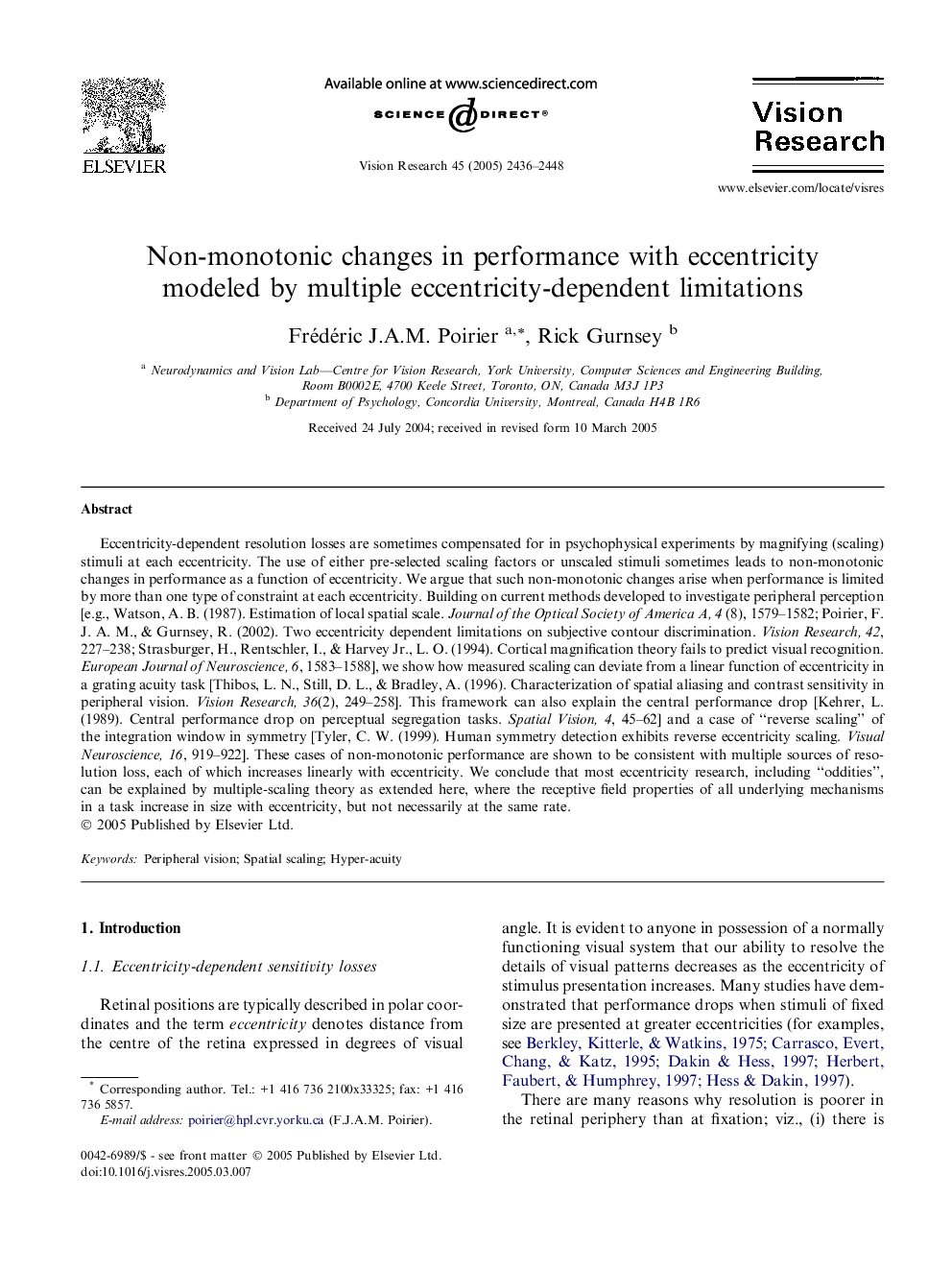| Article ID | Journal | Published Year | Pages | File Type |
|---|---|---|---|---|
| 4036778 | Vision Research | 2005 | 13 Pages |
Eccentricity-dependent resolution losses are sometimes compensated for in psychophysical experiments by magnifying (scaling) stimuli at each eccentricity. The use of either pre-selected scaling factors or unscaled stimuli sometimes leads to non-monotonic changes in performance as a function of eccentricity. We argue that such non-monotonic changes arise when performance is limited by more than one type of constraint at each eccentricity. Building on current methods developed to investigate peripheral perception [e.g., Watson, A. B. (1987). Estimation of local spatial scale. Journal of the Optical Society of America A, 4 (8), 1579–1582; Poirier, F. J. A. M., & Gurnsey, R. (2002). Two eccentricity dependent limitations on subjective contour discrimination. Vision Research, 42, 227–238; Strasburger, H., Rentschler, I., & Harvey Jr., L. O. (1994). Cortical magnification theory fails to predict visual recognition. European Journal of Neuroscience, 6, 1583–1588], we show how measured scaling can deviate from a linear function of eccentricity in a grating acuity task [Thibos, L. N., Still, D. L., & Bradley, A. (1996). Characterization of spatial aliasing and contrast sensitivity in peripheral vision. Vision Research, 36(2), 249–258]. This framework can also explain the central performance drop [Kehrer, L. (1989). Central performance drop on perceptual segregation tasks. Spatial Vision, 4, 45–62] and a case of “reverse scaling” of the integration window in symmetry [Tyler, C. W. (1999). Human symmetry detection exhibits reverse eccentricity scaling. Visual Neuroscience, 16, 919–922]. These cases of non-monotonic performance are shown to be consistent with multiple sources of resolution loss, each of which increases linearly with eccentricity. We conclude that most eccentricity research, including “oddities”, can be explained by multiple-scaling theory as extended here, where the receptive field properties of all underlying mechanisms in a task increase in size with eccentricity, but not necessarily at the same rate.
